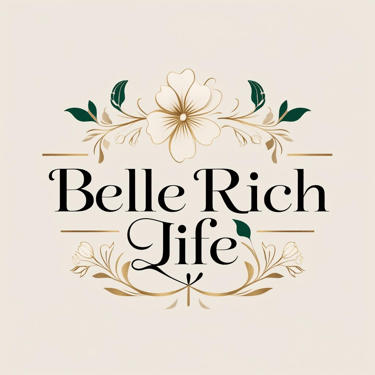From Rebellion to Revolution: The Evolution of Women's Casual Fashion and Its Cultural Impact
The story of women's casual fashion is far more than a simple tale of changing hemlines and silhouettes. It's a powerful narrative of liberation, self-expression, and cultural revolution. What began as practical necessity evolved into a visual language that challenged societal norms and empowered generations of women to express their authentic selves. This journey from rebellion to revolution has transformed not just wardrobes, but societies across the globe.
As we trace the remarkable evolution of women casual outfit inspiration over five decades, we'll discover how everyday clothing became a powerful tool for social change, personal expression, and ultimately, freedom. From the rebellious spirit of 1970s denim to the boundary-pushing streetwear of today, this is the story of how casual fashion helped women reclaim their identities and rewrite cultural rules.
The 1970s: Denim Revolution and the Birth of Casual Liberation
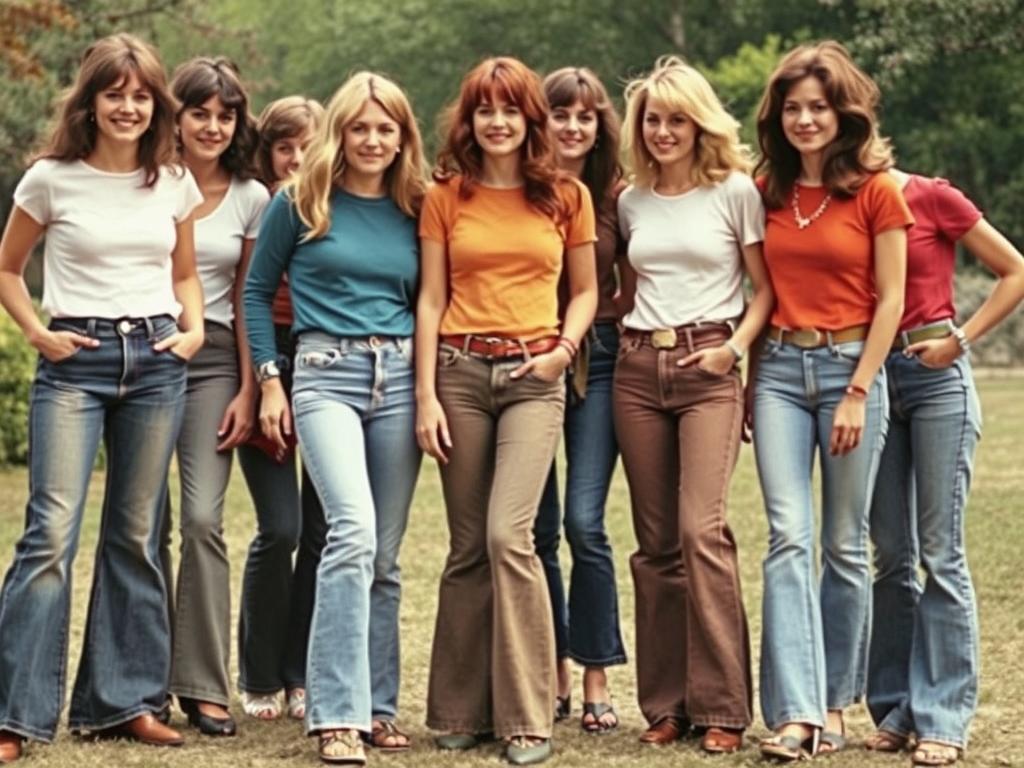

The 1970s marked the beginning of denim's reign in women's casual fashion
The 1970s marked a pivotal moment in women's casual fashion. As the women's liberation movement gained momentum, clothing became a powerful statement of independence. Restrictive girdles and mandatory skirts gave way to the comfort and practicality of denim jeans, t-shirts, and casual separates.
Flared jeans became the uniform of a generation seeking equality. Women embraced these practical garments not just for comfort, but as symbols of their changing role in society. The ability to move freely, to occupy physical space unapologetically, represented a radical shift in how women presented themselves.
Designer Katharine Hamnett began her career during this era, later becoming known for her political t-shirts and casual wear that merged comfort with consciousness. Her early work reflected the growing desire for clothing that served women's actual lives rather than restricting their movement or reinforcing outdated ideals.
The 1980s: Power Casual and Statement Dressing
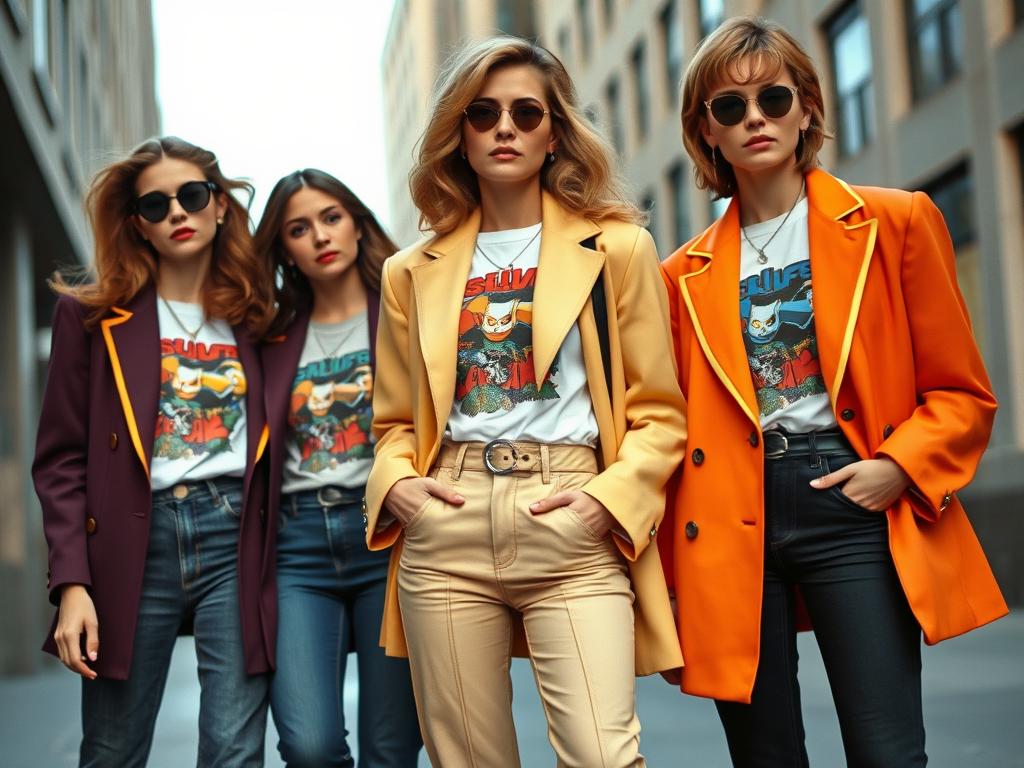

The 1980s brought power dressing into casual contexts with bold silhouettes
The 1980s transformed casual wear through the lens of power and ambition. As women entered corporate environments in unprecedented numbers, a new hybrid emerged: power casual. Oversized blazers paired with jeans, statement t-shirts under tailored jackets, and bold accessories created looks that balanced authority with individuality.
Icons like Madonna revolutionized casual fashion by blending streetwear with high fashion elements. Her famous "Boy Toy" belt and layered jewelry with casual tops created a blueprint for self-expression that influenced millions. This era saw casual outfits become vehicles for personal branding rather than just practical clothing.
English designer Vivienne Westwood brought punk sensibilities to mainstream fashion, challenging conventions with her deconstructed casual wear. Her influence helped women see everyday clothing as an opportunity for rebellion and artistic expression rather than conformity.
"I was mesmerized by Madonna's ability to transform simple casual pieces into powerful statements. She taught a generation of women that t-shirts and jeans could be revolutionary." - Fashion historian Valerie Steele
The 1990s: Grunge, Minimalism, and Casual Authenticity
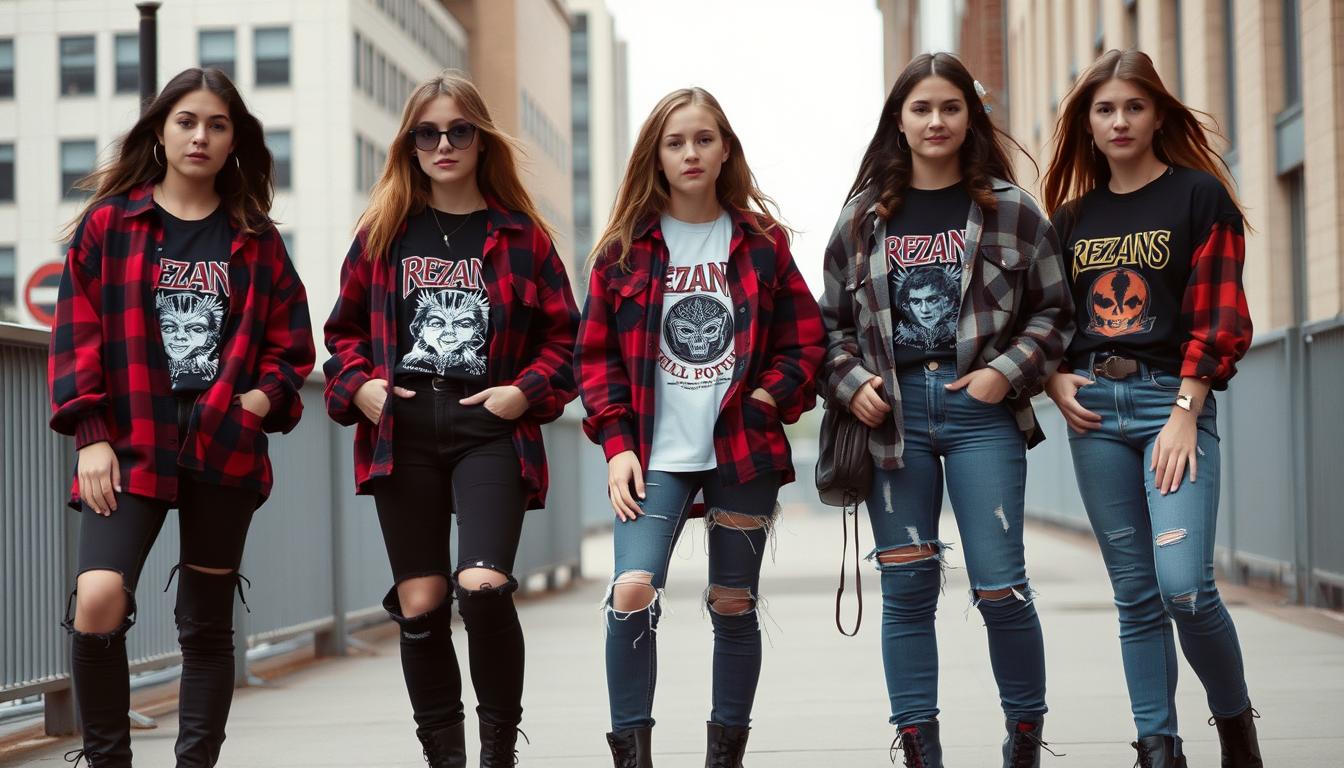

The grunge movement brought a new authenticity to women's casual fashion
The 1990s witnessed a dramatic shift toward authenticity in women's casual fashion. The grunge movement, pioneered by musicians but popularized by everyday women, rejected the excess of the 1980s in favor of flannel shirts, band tees, and deliberately disheveled looks. This aesthetic wasn't just fashion—it was a statement against artifice and consumerism.
Simultaneously, minimalism emerged as a powerful counter-trend. Designers like Calvin Klein and Jil Sander created pared-down casual pieces that celebrated simplicity. Women embraced capsule wardrobes with quality basics, reflecting a growing consciousness about consumption and sustainability.
The 1990s also saw casual fashion become more inclusive of diverse body types. Brands began to recognize that women of all sizes deserved comfortable, stylish casual options—though this movement was just beginning and would gain significant momentum in later decades.
Grunge Influence
Flannel shirts, band tees, and combat boots became symbols of authenticity and rejection of fashion rules.
Minimalist Movement
Clean lines, neutral colors, and quality basics created a new approach to casual dressing focused on longevity.
The 2000s: Globalization and the Rise of Fast Fashion
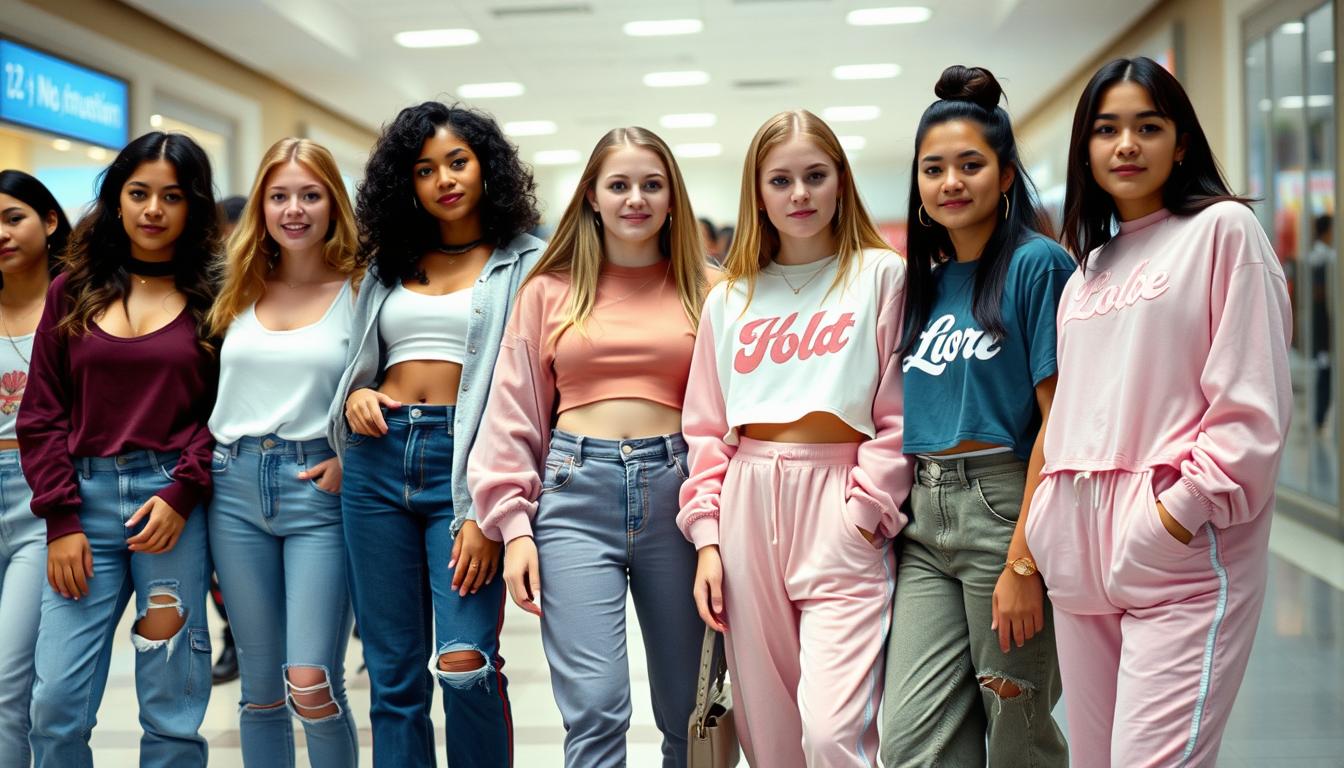

The 2000s saw casual fashion become increasingly globalized and trend-driven
The new millennium brought unprecedented globalization to women's casual fashion. Fast fashion retailers like H&M and Zara transformed how women consumed everyday clothing, making trend-driven pieces accessible at unprecedented speed and affordability. This democratized fashion but also created new questions about sustainability and ethics.
Celebrity influence reached new heights during this era. Stars like Paris Hilton and Britney Spears popularized casual looks that millions emulated—from velour tracksuits to low-rise jeans. The line between casual and formal continued to blur as women paired t-shirts with blazers and sneakers with dresses.
This era also saw the rise of "athleisure" as yoga pants and performance wear moved beyond the gym into everyday casual contexts. This trend reflected women's increasingly busy lives and desire for clothing that could transition between multiple activities.
Global Fashion Phenomenon
The 2000s saw casual fashion trends spread globally at unprecedented speed. A style worn by a celebrity in Los Angeles might be replicated in Tokyo, London, and Mumbai within weeks—creating the first truly global casual fashion language.
The 2010s: Digital Revolution and Inclusive Casual Fashion
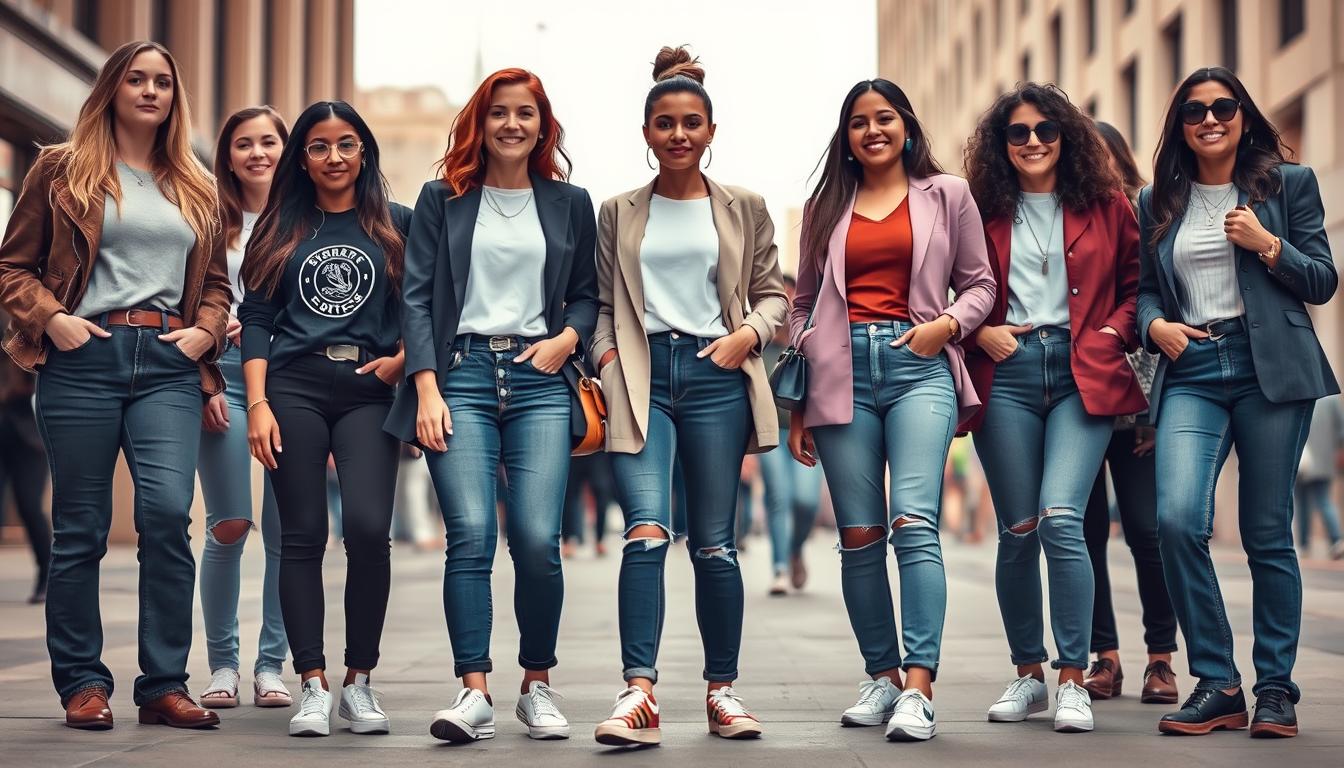

Social media transformed how women discovered and shared casual fashion inspiration
The 2010s revolutionized women's casual fashion through digital platforms and social movements. Instagram and Pinterest became powerful sources of outfit inspiration, allowing women to discover styles beyond traditional fashion media. Influencers emerged as the new fashion authorities, often showcasing accessible casual looks that resonated with everyday women.
Body positivity and inclusivity movements transformed casual fashion during this decade. Brands faced increasing pressure to offer extended size ranges and represent diverse bodies in their marketing. Women of all sizes began demanding the same casual fashion options, rejecting the notion that style should be limited by body type.
Rihanna's launch of Fenty represented a watershed moment for inclusive casual fashion. Her emphasis on creating styles for all body types and skin tones set a new standard for the industry and empowered women to expect representation in casual fashion.
Discover Inclusive Fashion Pioneers
Learn about the brands and designers who transformed casual fashion to embrace all women.
The 2020s: Sustainable Casual and Post-Pandemic Style
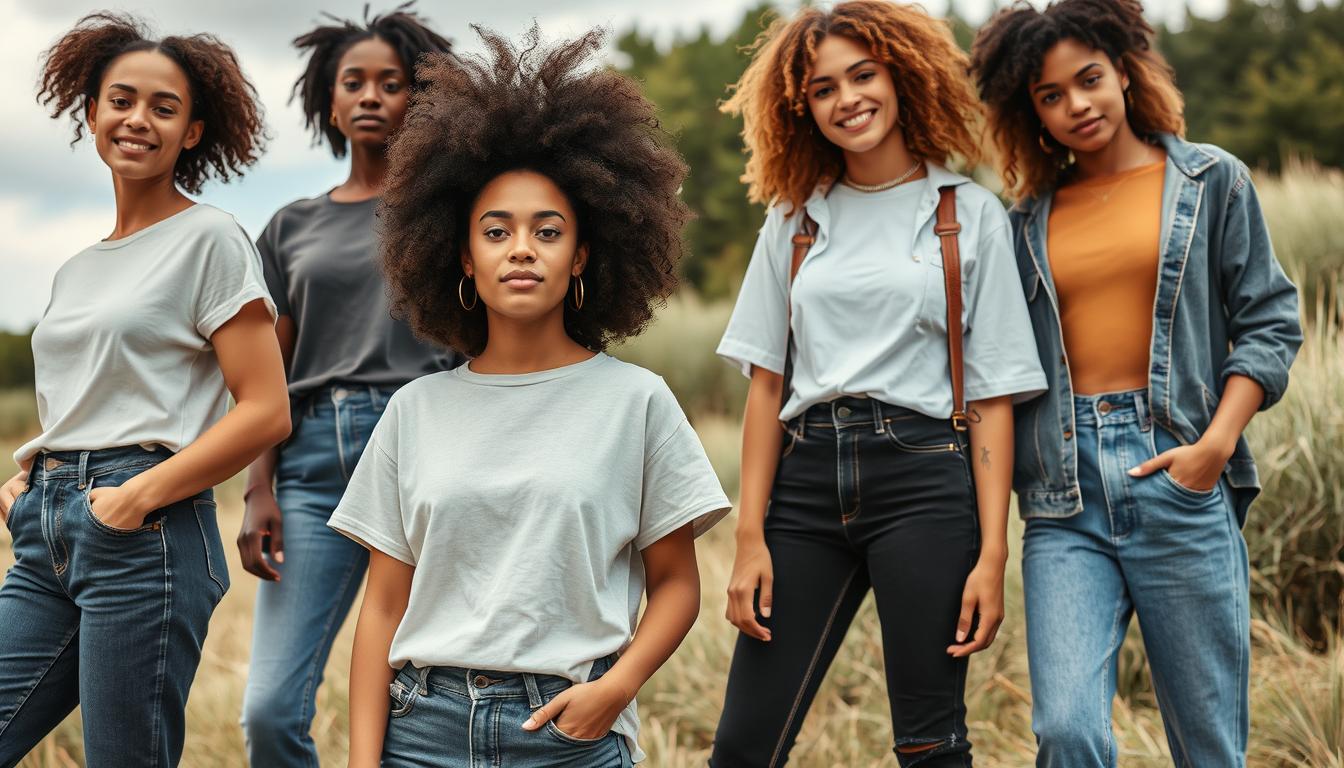

Sustainability has become central to women's casual fashion choices in the 2020s
The current decade has seen sustainability move from niche concern to central focus in women's casual fashion. Conscious consumers increasingly choose brands that prioritize ethical production and environmental responsibility. Capsule wardrobes, second-hand shopping, and investment in quality basics have transformed how many women approach casual dressing.
The COVID-19 pandemic dramatically accelerated casual fashion trends as remote work became widespread. Comfort-focused pieces like elevated sweatpants and structured knits emerged as new wardrobe staples. This shift has permanently blurred the lines between "home clothes" and "outside clothes" for many women.
Digital fashion communities have continued to democratize style, with platforms like TikTok allowing diverse voices to share casual outfit inspiration outside traditional fashion systems. This has created space for subcultures and niche aesthetics to flourish, from cottagecore to Y2K revival.
Sustainable Basics
Ethically-made t-shirts, organic cotton jeans, and responsibly-sourced casual wear have become priorities.
Comfort Revolution
Post-pandemic casual styles emphasize comfort without sacrificing style through elevated basics.
Digital Communities
Online platforms have created space for diverse casual fashion expressions outside traditional systems.
Global Perspectives: Casual Fashion Across Cultures
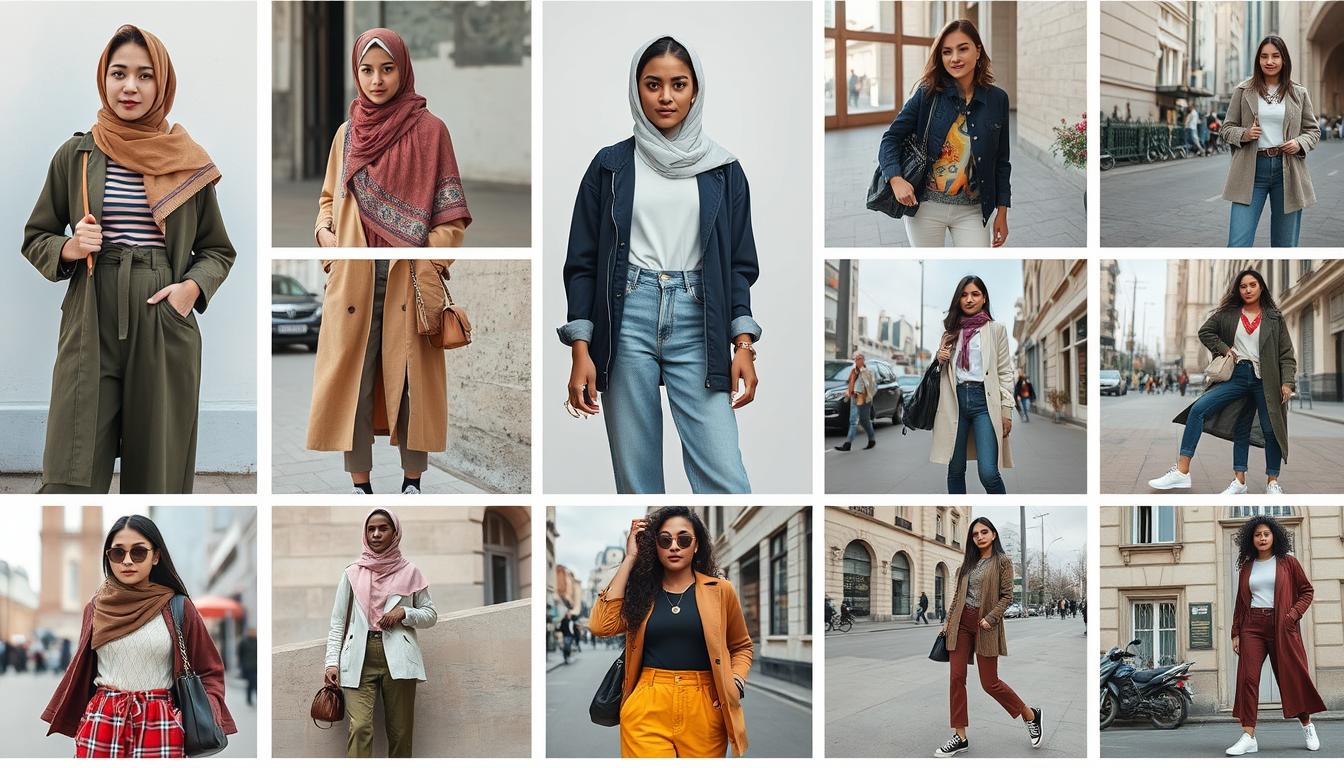

Casual fashion takes unique forms across different cultural contexts
Women's casual fashion manifests differently across global cultures, reflecting local values, climate, and traditions. In the Middle East, modest streetwear has emerged as a vibrant casual fashion category, with designers creating comfortable everyday pieces that respect cultural norms while embracing contemporary style elements.
South Asian markets have developed unique hybrid casual styles that blend traditional textiles and techniques with Western silhouettes. Women might pair kurta-inspired tops with jeans or incorporate traditional embroidery into t-shirts, creating casual looks that honor heritage while embracing modernity.
African casual fashion has gained global recognition for innovative approaches to everyday wear. Designers from Lagos to Johannesburg create casual pieces that incorporate traditional patterns and techniques into contemporary silhouettes, challenging Western-centric notions of what constitutes "casual."
"The beauty of contemporary casual fashion is how it allows women to honor their cultural heritage while participating in global style conversations. A woman in Jakarta, Cairo, or Nairobi can interpret casual fashion through her unique cultural lens."
Fashion anthropologist Minh-Ha T. Pham
Revolutionary Designers: The British Influence on Casual Fashion
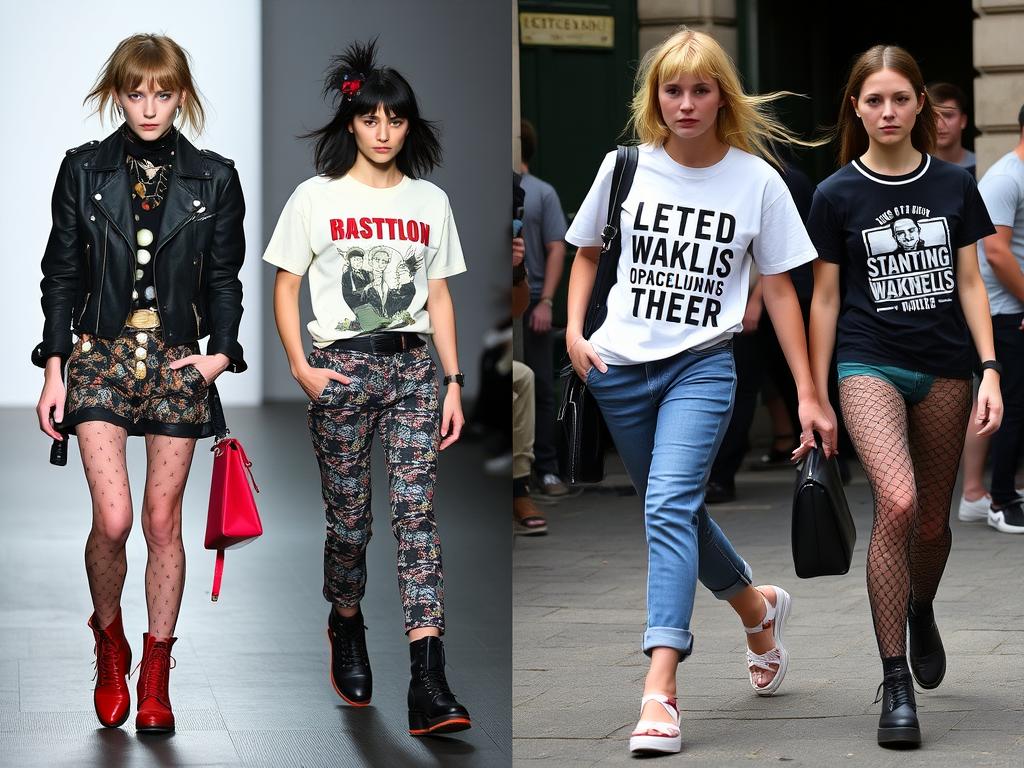

British designers Vivienne Westwood and Katharine Hamnett revolutionized casual fashion with political consciousness
British designers have played a pivotal role in transforming women's casual fashion from purely functional to politically powerful. Vivienne Westwood brought punk sensibilities to everyday wear, challenging conventions with deconstructed casual pieces that questioned authority and tradition. Her influence helped women see casual clothing as a canvas for self-expression and social commentary.
Katharine Hamnett revolutionized casual fashion with her oversized political slogan t-shirts in the 1980s. When she met Prime Minister Margaret Thatcher wearing a t-shirt protesting nuclear missiles, she demonstrated how casual clothing could be a powerful vehicle for women's voices in political discourse.
Stella McCartney later continued this tradition of conscious casual wear, pioneering sustainable approaches to everyday fashion. Her commitment to cruelty-free design showed how casual clothing choices could align with women's ethical values and environmental concerns.
Discover Revolutionary Designers
Explore how British designers transformed casual fashion into a platform for women's voices.
Celebrity Influence: How Icons Transformed Casual Fashion
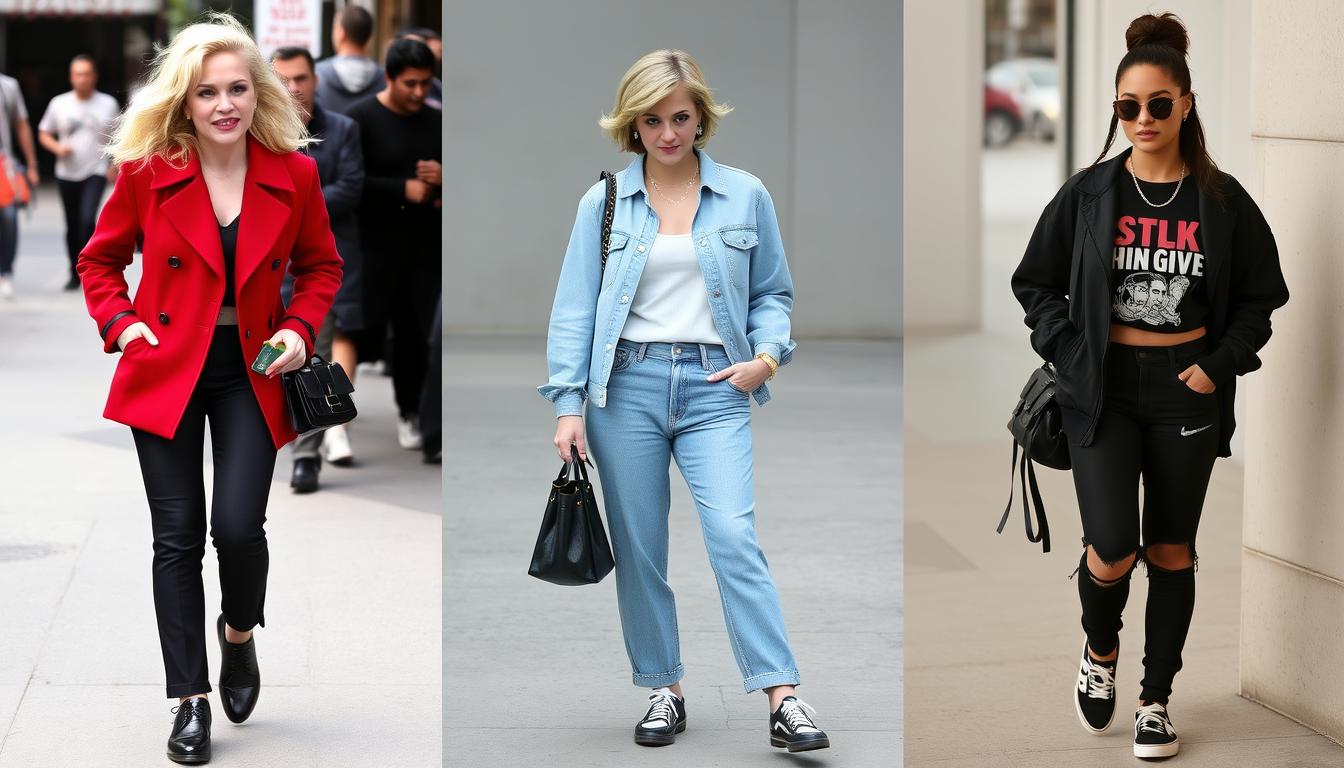

From Madonna to Rihanna, celebrities have redefined casual fashion possibilities
Celebrities have played a crucial role in expanding the boundaries of women's casual fashion. Madonna's 1980s street style—mixing religious imagery with casual pieces—challenged notions of appropriate feminine dress and inspired millions to experiment with their everyday looks. Her ability to transform simple items through styling and attitude created new possibilities for self-expression.
Princess Diana revolutionized royal casual wear in the 1990s with her cycling shorts, sweatshirts, and jeans. By bringing previously private casual clothing into public view, she gave permission to women everywhere to prioritize comfort without sacrificing style or dignity.
In the 2000s and beyond, Rihanna has continually redefined casual fashion boundaries. Her fluid approach to gendered clothing, embrace of diverse body types in her Fenty line, and fearless mixing of high fashion with streetwear elements have expanded the very definition of casual style for women globally.
How do celebrities influence everyday women's casual fashion choices?
Celebrities introduce new styling possibilities, normalize emerging trends, and often make previously "niche" casual items mainstream. Their visibility helps women envision how certain casual pieces might work in real life and provides permission to experiment with personal style.
Fashion Battles: Overcoming Resistance to Women's Casual Style
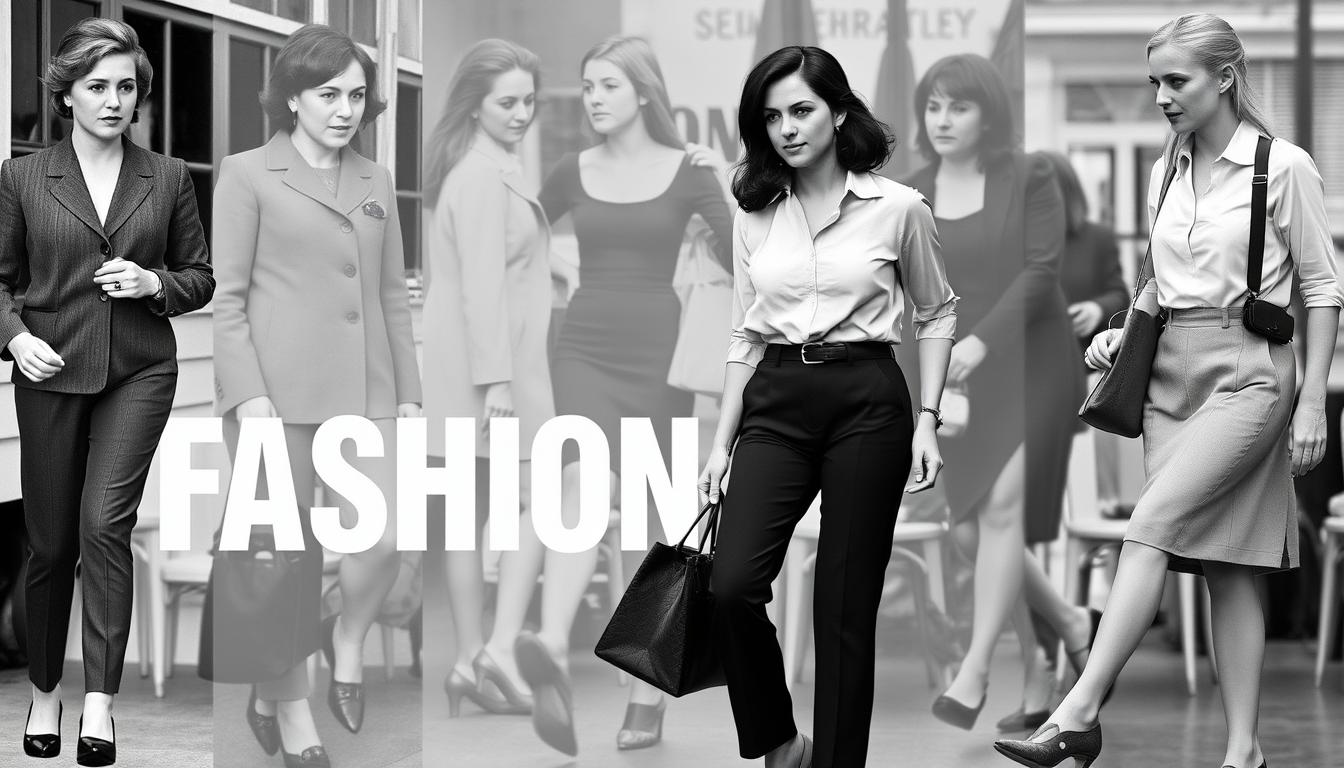

Women have fought numerous battles for the right to casual clothing in professional and public spaces
The journey toward casual fashion acceptance has not been without significant struggle. Throughout the 20th century, women faced resistance when attempting to wear pants in professional settings, with some workplaces explicitly forbidding them until the 1970s. The fight for comfortable, practical clothing was directly tied to women's professional advancement and physical freedom.
Even as casual Friday policies emerged in the 1990s, women faced double standards in how "appropriate casual" was defined along gender lines. Men could wear polo shirts and khakis, while women navigated complex, often contradictory expectations about casual professional attire that still maintained "femininity."
The #MeToo movement brought renewed attention to how women's casual clothing is policed and sexualized. Conversations about school dress codes, workplace attire, and public judgment of women's casual choices highlighted how clothing remains a battleground for bodily autonomy and equal treatment.
Dress Code Revolution
In 2019, over 300 major U.S. companies revised their dress code policies to allow more casual options for women, recognizing that previous policies had often held women to different standards than their male colleagues.
The Future of Women's Casual Fashion: Beyond Boundaries
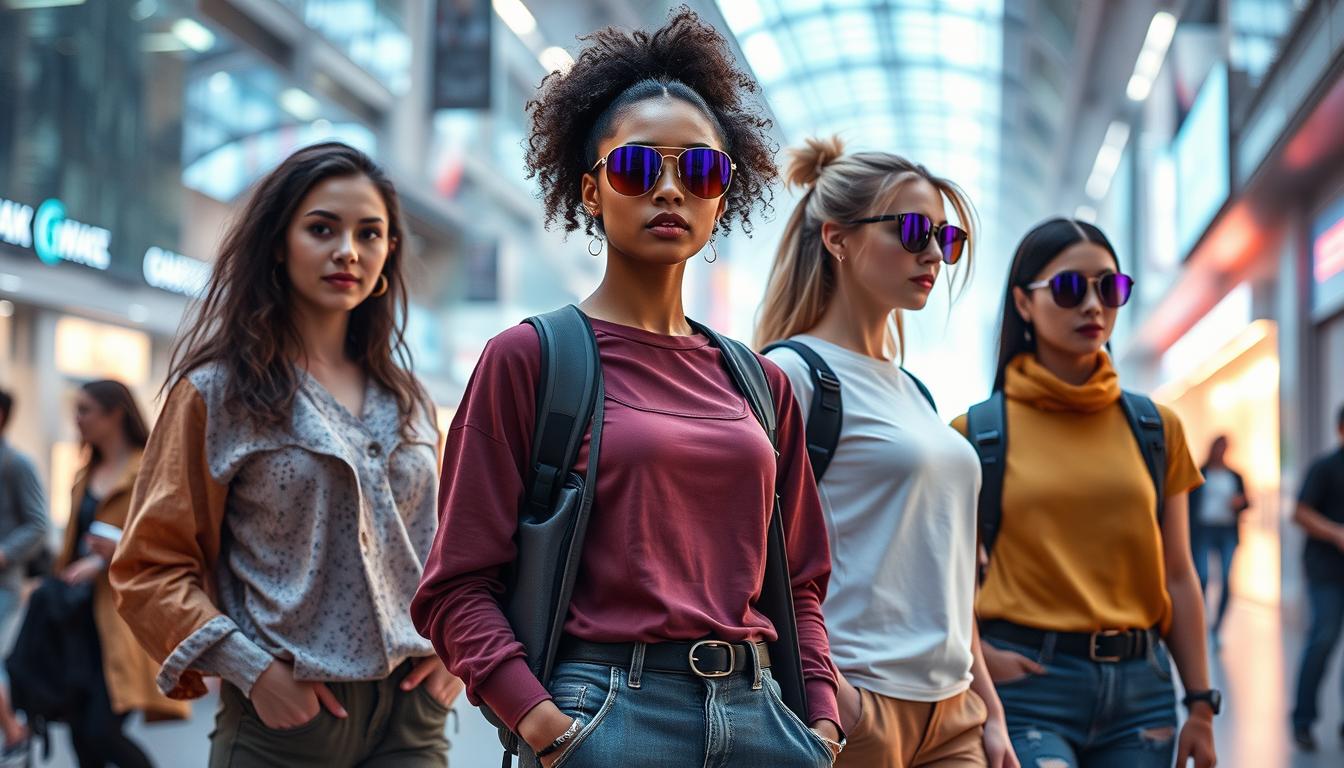

The future of casual fashion points toward sustainability, technology integration, and radical inclusivity
As we look toward the future of women's casual fashion, several transformative trends are emerging. Sustainability is moving from optional to essential, with circular design principles reshaping how casual clothing is produced and consumed. Rental services, repair programs, and biodegradable materials are becoming central to casual fashion innovation.
Technology integration is creating new possibilities for personalized casual wear. From app-designed custom jeans to temperature-regulating fabrics, technology is enhancing both the functionality and sustainability of everyday clothing. These innovations are particularly significant for women, whose clothing needs have historically been secondary to aesthetic considerations.
Perhaps most importantly, the boundaries of gender in casual fashion continue to dissolve. The future points toward more fluid, less rigidly categorized casual clothing that allows for individual expression beyond binary limitations. This evolution represents the continued expansion of freedom and choice that has characterized women's casual fashion journey.
Embrace Your Fashion Revolution
Discover how your casual style choices can reflect your values and contribute to positive change.
Conclusion: The Ongoing Revolution of Women's Casual Fashion
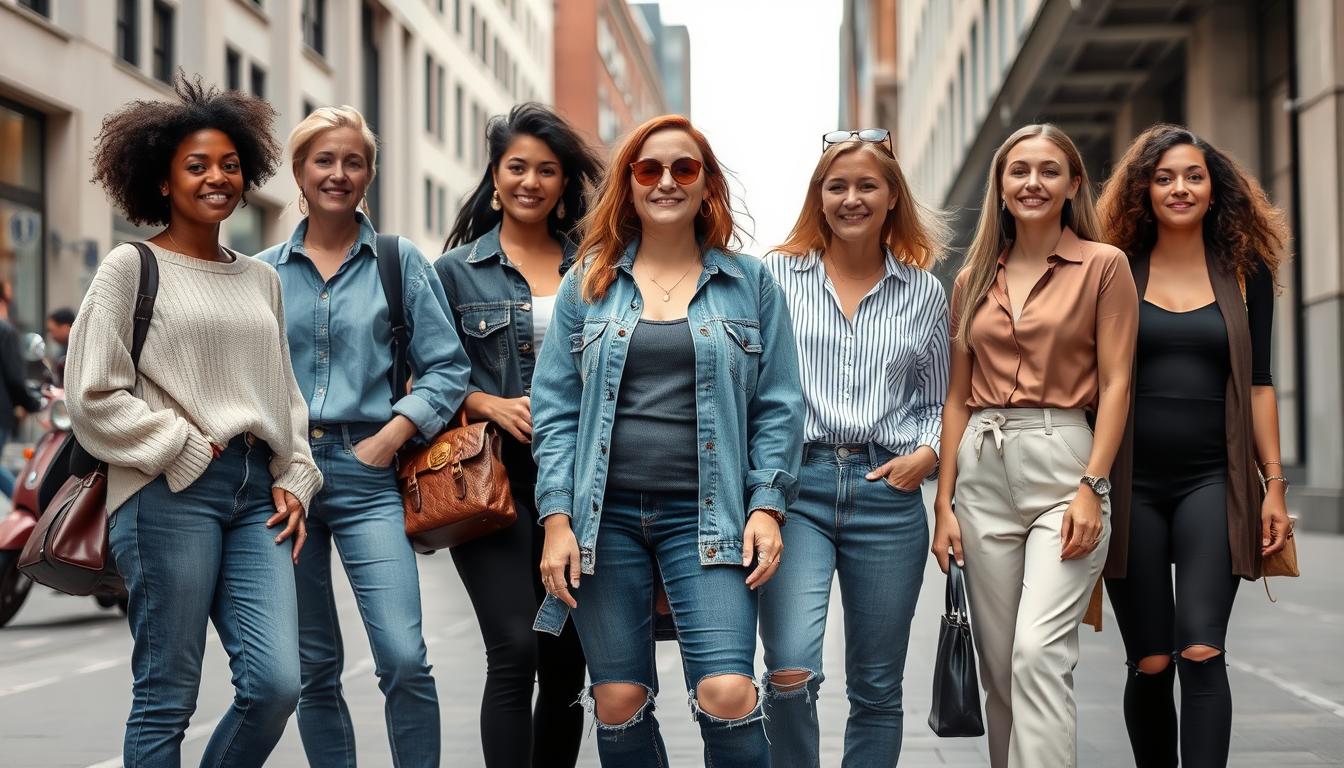

Today's casual fashion represents the culmination of decades of evolution toward freedom and self-expression
The evolution of women's casual fashion from rebellion to revolution reflects a broader journey toward freedom, equality, and self-determination. What began as practical necessity has become a powerful form of personal expression and cultural commentary. Through casual clothing choices, women have challenged restrictions, claimed public space, and redefined femininity on their own terms.
As we've seen across different cultures, historical periods, and social movements, casual fashion has never been "just clothes." It has been a battleground for women's rights, a canvas for self-expression, and a tool for social change. From denim jeans to political t-shirts, casual garments have carried profound meaning in women's ongoing fight for equality.
The story of women's casual fashion continues to unfold, with each generation adding new chapters through their choices and innovations. As boundaries between formal and casual, masculine and feminine, continue to blur, the future promises even greater freedom for women to dress according to their authentic selves rather than external expectations.
Style for Modern Women: From Casual Looks to Professional Fashion
Today’s modern woman deserves clothing that blends comfort, sophistication, and individuality.Whether you're dressing for work, weekends, or special events, building a wardrobe that reflects your life and personality is essential. That’s why exploring casual style women love, investing in elevated basics, and choosing timeless pieces from Australian designer brands can transform your entire look.
For everyday comfort casual outfits attire for women should feel relaxed yet intentional. Soft knits, tailored denim, breathable tops, and versatile layers create the perfect foundation for effortless dressing. These essentials help you build women casual outfits that pair seamlessly with sneakers, sandals, or minimal accessories—making daily style simple, chic, and comfortable.
When it’s time to elevate your wardrobe, explore premium fashion dresses for women designed to flatter and highlight your natural beauty. From flowy silhouettes to structured evening pieces, the right dress can take you from daytime outings to elegant dinners with ease. Fashion-forward prints, refined fabrics, and attention to detail give each look a polished finish that feels feminine and modern.
For the workplace, choosing the right women’s professional clothing is key. Structured blazers, tailored trousers, crisp blouses, and sophisticated midi dresses create a powerful yet approachable look. Professional fashion today balances smart design with comfort—allowing you to move confidently in meetings, presentations, or everyday office tasks. Mix classic neutrals with subtle colors and minimalist accessories for a refined professional image.
Of course, style is not just about function—it’s about expression. Stylish outfits for women can be bold, playful, elegant, or minimal depending on your mood. Layering textures, mixing silhouettes, and incorporating statement pieces from popular Australian designer brands helps create a look that is uniquely yours. These designers are celebrated for their craftsmanship, modern aesthetics, and ability to blend glamour with comfort.
Whether you're curating a capsule wardrobe or refreshing your seasonal staples, embracing versatile pieces allows you to shift effortlessly from work to weekend. With thoughtful styling and quality essentials, every woman can create a wardrobe that feels authentic, stylish, and beautifully balanced.
Frequently Asked Questions (FAQ)
01. What defines casual style for women?
Casual style for women focuses on comfort, simplicity, and versatility. It includes everyday pieces like relaxed tops, denim, knitwear, and comfortable shoes. The goal is to create effortless looks that feel natural while still appearing put-together.
02. What are the best fashion dresses for women to wear during the day?
Daytime fashion dresses for women often include flowy midi dresses, wrap dresses, shirt dresses, and lightweight summer styles. These designs offer comfort and movement while remaining stylish for brunch, errands, or weekend outings.
03. How can I create stylish outfits for women without over complicating my wardrobe?
Start with quality basics—neutral tops, tailored pants, versatile dresses, and a great pair of jeans. Then add layers like cardigans, blazers, or accessories to create multiple stylish outfits for women using fewer pieces.
04. What should I look for in women’s professional clothing?
Look for structured silhouettes, high-quality fabrics, and tailored fits. Blazers, dress pants, polished blouses, and sleek midi dresses form the foundation of sophisticated women’s professional clothing suitable for office environments.
05. How do I choose casual attire for women that still looks fashionable?
Opt for clean lines, breathable fabrics, and neutral tones that are easy to mix and match. Combining comfort with minimal styling helps create casual attire for women that feels modern and effortless.
Home Beauty & Skincare Fashion & Style Jewelry & Watches Luxury Fragrances Home & LifestyleBlogs About Contact
eliel@bellerichlife.com
Contact us
© 2025. All rights reserved
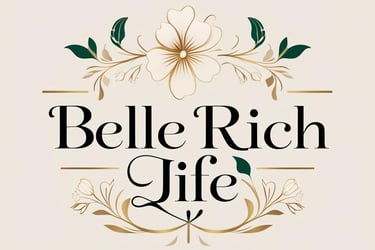

This blog may contain affiliate links, which means I might earn a small commission, at no extra cost to you, if you decide to make a booking through one of these links. I only recommend products and services I actually use or genuinely believe will bring value. For more information visit http://paidforadvertising.com. Thank you for your support!
Affiliate Disclosure
